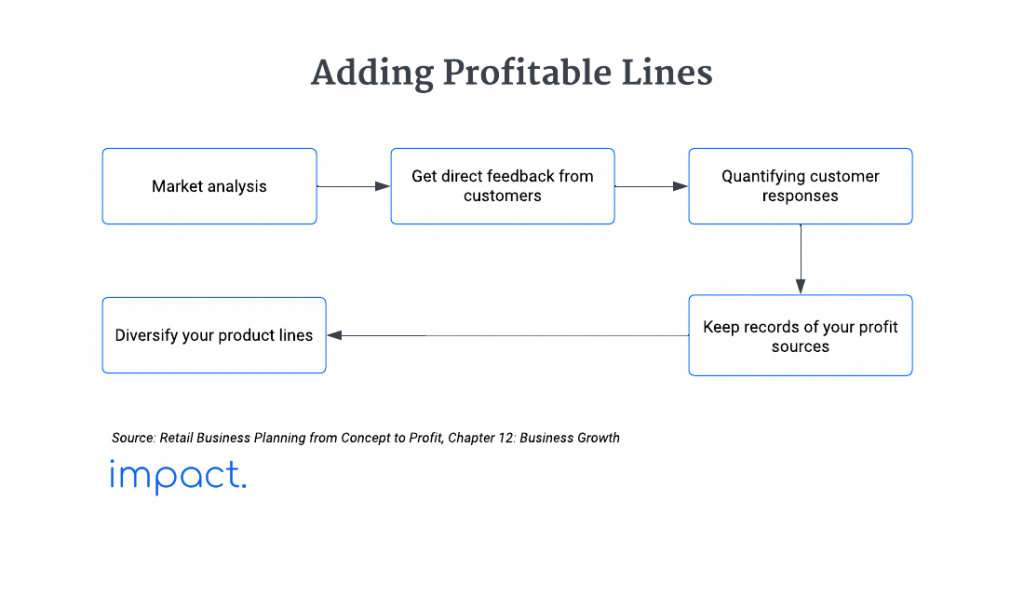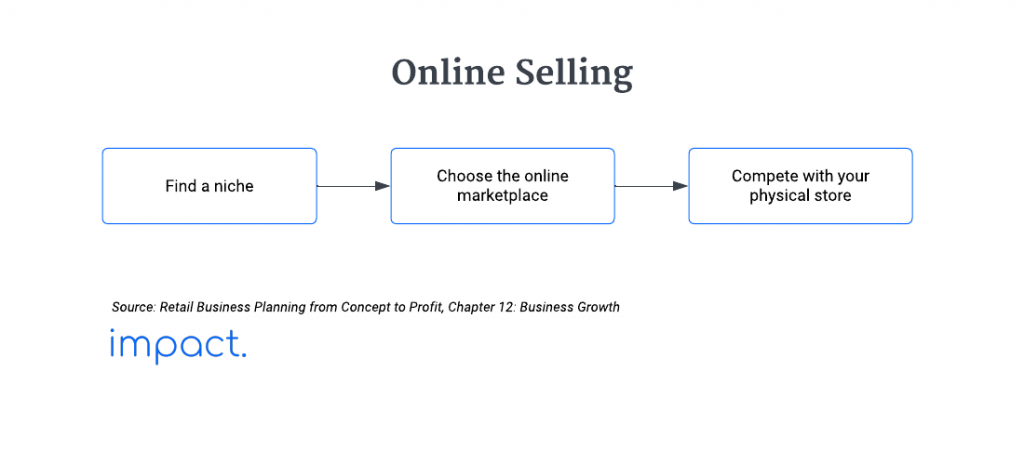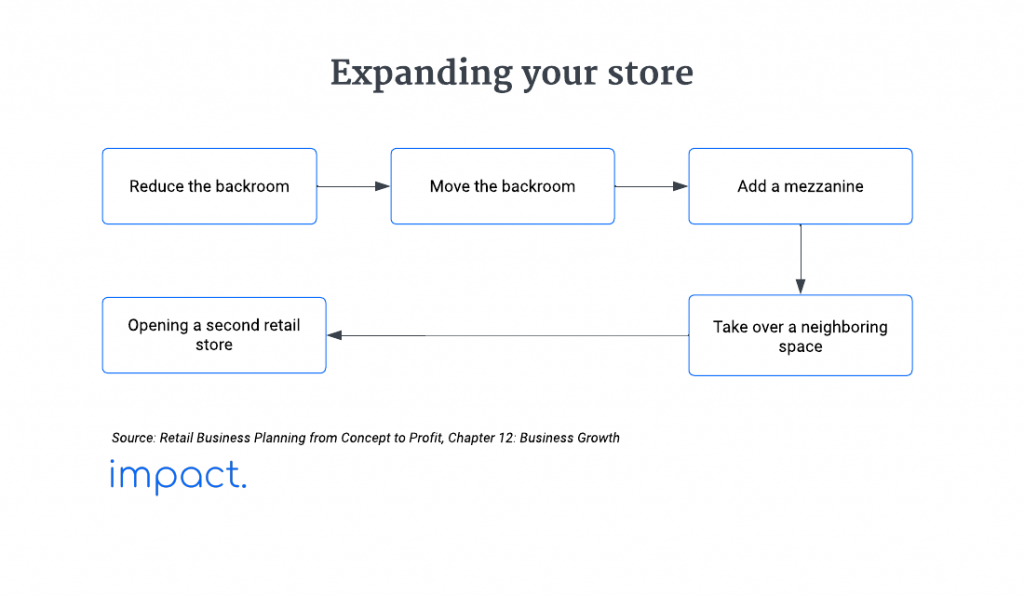Kanban: Definition, 6 Rules, and its Benefits
Kanban is a crucial part of the Just in Time (JIT) system, which we discussed…
Sean Thobias
May 17, 2025Now that your retail store is running let’s focus on business growth. Growing a business comes in various forms, and there’s no one-size-fits-all solution.
To grow your retail business, consider the following strategies outlined in Dan Ramsey’s book, “The Everything Guide to Starting and Running a Retail Store“:
In this part of our retail guide, we’ll discuss signs indicating it’s time to expand your business and the three retail growth strategies to make it happen.
If your retail store is consistently crowded and customers complain about long wait times or items being out of stock, it may be time to expand your business. The constant crowd and complaints mean you’re hitting capacity, and expanding will help you meet the demand.
If your profits have been steadily increasing, it’s a strong indicator that your business is thriving. This financial stability suggests you have the resources to support and sustain retail growth.
Satisfied and loyal customers often come back, indicating a healthy business. If a big part of your sales is from repeat customers, it’s a sign to consider expanding to keep up with the increasing demand.
If your day-to-day business operations are smooth and your systems are working well, you’re in an excellent position to grow. Efficient operations are a sign that your business can handle the challenges of expanding.
Evaluate your competitors closely. If you’re consistently doing better or at least holding your own against them, that’s a green light to consider growing your business and securing your spot in the market.
Your employees are the face of your business, and their feedback is crucial. If they’re facing challenges in meeting customer needs or have ideas for improvement, it’s a clear signal that your business needs to expand to ensure better service for both customers and employees.

Understanding your market is crucial for business success. Instead of getting overwhelmed by complex analysis, focus on discovering your customers’ wants. Utilize simple statistics to make informed decisions and enhance your retail strategy.
Conducting a fundamental market analysis for your retail business can be simple and practical. Here’s how:
To know what your customers want, ask them or observe their behavior. Collect transaction data from day one, noting what they buy, when, and the payment methods used.
Additionally, track store traffic details, such as the number of visitors, their initial department visits, and how long they spend there – all of which provide valuable insights.
If you’ve casually talked to customers about their habits, it might be hard to measure the results. To fix this, use clear and measurable questions by standardizing your approach using surveys.
For example:
Instead of using a subjective question like, “What do you generally like about our product?” try asking, “How satisfied are you with our product on a scale of 1 to 10?” You’ll get a more specific and measurable response.
To get better results, talk to more customers. Spread your surveys throughout the day and week to get a well-rounded view of your customer base. Surveys provide valuable data that your retail store can use to add profitable product lines.
Maintaining records for your retail store might feel like a hassle, but it’s crucial. Even though it costs time and money, the payoff comes when you need to understand where your store’s profits are coming from.
Look at which products don’t bring in much profit or sell at a loss. If space is limited, prioritize the more profitable items over the less profitable ones. Allocate your resources strategically, focusing on the most critical lines to your bottom line.
Focus your independent retail store on a core product, but as your business expands, consider adding new components or complementary items for increased profitability. This strategy is known as diversification.
You can diversify your product line by doing the following:
When expanding your product range, understand your customers and their desired products. Identify trustworthy wholesalers, try out the products, and closely monitor sales to make sure they bring in profits.
Nowadays, many retail businesses create online stores alongside their physical ones. This move can boost profits by attracting more customers and generating additional sales.

Creating an online store is like setting up a brick-and-mortar shop, with the key distinctions being your customer base and how you cater to them.
Start by pinpointing a target market for your products based on your skills, interests, and what customers might need. Investigate competitors in that niche to grasp the market demand and identify any opportunities.
Choose to sell only on your website or popular marketplaces like Amazon, Tokopedia, and Shopee. Compare fees, rules, and target audiences to pick the best platform for your products.
Ensure your product listings on these platforms are well-optimized with the right keywords and images. Utilizing multiple platforms helps you reach more customers and expand your sales channels effectively.
After launching your online store, it’s crucial to balance it with your brick-and-mortar presence and stay competitive effectively. To make this work seamlessly, try these practical tips to harmonize your online and physical stores:
Also read: Retail Promotions: Key Benefits and its 5 Steps for Success
Check if your organized store is reaching its full potential before making big changes. Look for signs showing your customers are ready for a larger retail store.
If you want to expand your retail store, you have choices. You can shrink the back room, relocate it, add a mezzanine, or take over a nearby space. Alternatively, you can move to a larger store or open a second one.

To make more space in your store, shrink the back room. As your store grows, move everything you need to the sales floor, leaving the back room less crowded or cluttered.
Focus on ways to make the back room more diminutive and more efficient. Here are some ideas:
Consider skipping the backroom in your retail store altogether. Look for nearby spaces in your mall or retail center for storage and shipping.
If that’s not an option, find a secure storage unit nearby or rent a portable one near the back door for extra stock.
A mezzanine is a middle floor between two main floors or between the main floor and a high ceiling. Alternatively, it can be a low platform with stairs, creating extra sales space with storage below.
The advantage of a low mezzanine is that it’s visible from anywhere in your store. If you’re interested, hire a retail architect to design one. Ensure you obtain the necessary permissions and a long-term lease from your landlord.
Around 20% of small businesses don’t make it past their first year, which climbs to 30% by the second year’s end, as the Bureau of Labor Statistics reports.
Consider seizing the chance to grow your store — maybe by knocking down a wall or adding a doorway to a nearby store. While the right conditions and timing are crucial, getting to know your neighbors can prepare you to expand without relocating.
Opening a second retail store can bring advantages but can also be costly, especially if you have to divide your focus between the two. Here are some things to think about as you consider opening another store:
Also read: Retail Success: Enjoying Rewards and Selling Your Business
As your retail business grows, watch for signs indicating it’s time to expand. Whether adding new products, going online, or opening more retail stores, each decision comes with its challenges and rewards.
Successful retailers use technology such as an ERP system to automate tasks and streamline processes to handle the increased workload of business growth. In the next chapter of our retail guide, we’ll discuss ways to enjoy your business and explore the following steps, including selling it.
Ramsey, D., & Ramsey, J. (2010). The Everything Guide to starting and running a retail store: All you need to get started and succeed in your own retail adventure. Adams Media.
Impact Insight Team
Impact Insights Team is a group of professionals comprising individuals with expertise and experience in various aspects of business. Together, we are committed to providing in-depth insights and valuable understanding on a variety of business-related topics & industry trends to help companies achieve their goals.
See how our ERP provides better value.
Speak with our consultant to explore how we can improve your accounting, processes, and people.
